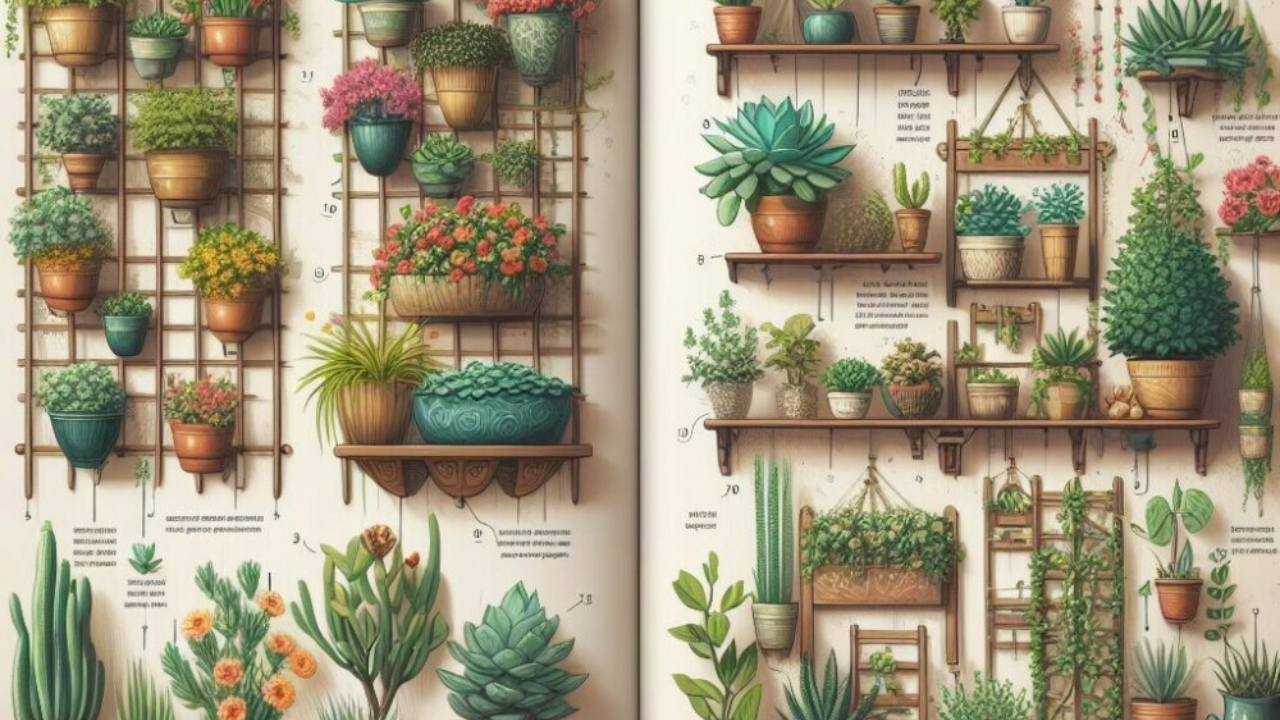
I’m going to introduce you to a game-changer for your small yard: vertical gardening. This isn’t just about saving space; it’s about transforming your outdoor area into a lush, vibrant oasis, no matter the size. Vertical gardening is a clever solution that integrates gardening into the vertical plane—think of it as agriculture that defies gravity.
You’ll learn how going up rather than out can have immense benefits for your outdoor space. Vertical gardens take up minimal ground area, which perfectly matches your cozy yard. Beyond just saving space, vertical structures can add a layer of privacy, reduce noise from the street, and even lower your home’s heating and cooling costs by providing extra insulation.
Now, this isn’t just a practical approach. Vertical gardens can pack a powerful punch of aesthetics, too. They create a living art piece that can be both calming and engaging. The layers of greenery or pops of floral color will catch the eye of any onlooker, making your small yard not only functional but also a topic of conversation.
As we transition into the nuts and bolts of vertical gardening, you’ll want to start thinking about the suitable structures for your green haven. Next, I’m here to help you make choices that will turn your vertical garden dream into a reality. It’s essential to select the right support systems for both the plants you choose and the space you have, which we’ll tackle in the next section.
Choosing the Right Structures for Your Vertical Garden
You’ll learn about selecting structures that support your plants and complement your small yard. Regarding vertical gardening, the show’s star isn’t just the plants but also the structures they grow on. Whether you decide on trellises, wall planters, or tower gardens, each has unique charm and functionality.
I’ll guide you through the basics of pairing the proper structure with the right plant. For example, trellises are fantastic for climbing plants like ivy or beans, while wall planters may be more suitable for herbs and smaller flowers. Vegetables like tomatoes and peppers love the support of a sturdy tower garden.
Choosing between DIY structures or pre-made options depends on your time and budget. A DIY vertical garden can be a satisfying project with a personal touch, while pre-made structures offer convenience and professional aesthetics. Whatever you choose, remember to keep stability and safety at the forefront. You don’t want a gust of wind to ruin your green oasis.
The exemplary structures not only support growth but help manage the health of your plants as well. Now, I will delve into plant selection and care, which are just as pivotal as the structures. After all, your garden’s vitality hinges on the right plant varieties and how well they are tended to.
Plant Selection and Care In a Vertical Setting
When you’re eyeing your small yard and puzzling over which plants to nurture your vertical oasis, start by considering climbers and non-climbers. Climbing plants, like ivy or certain types of jasmine, are natural for scaling trellises and netting. On the flip side, non-climbers, such as succulents or some vibrant flowering species, can be housed in pocket planters and don’t need a structure to cling to.
Your selection isn’t complete without understanding the essentials: soil, water, and nutrients. Vertical gardening typically requires a unique potting mix, one that’s both light enough to avoid weighing down your structures and nutritionally balanced for your plants’ needs. Drainage and watering are vital due to gravity’s pull—your watering efforts at the top can neglect those at the bottom if not done thoughtfully. Drip irrigation systems are a savvy solution, ensuring even moisture distribution from top to bottom.
Disease and pests can spread like wildfire in a realm where different species live in close quarters. Space out your plants to allow air circulation and perform regular checks to catch unwelcome guests early. Companion planting can be a game changer, not just in warding off pests but also in promoting healthy growth among neighboring plants.
As seasons change, so will the needs of your vertical garden. Summer might call for more frequent watering, while winter could lead you to insulate your structures to protect against frost. Remember, autumn is the perfect time for pruning—preparing your plants for a season of rest and rejuvenation.
Innovative Techniques and Tools for Small Yard Vertical Gardening
So you’ve got your structure set and your green friends happily growing vertical. Now it’s time to get creative and push the boundaries of your small yard with some innovative gardening techniques.
First, let’s discuss incorporating hydroponics. This soil-less method of gardening is not only cool but also saves space and resources. It’s a top-tier strategy for those looking to get the most out of a vertical setup.
Managing your vertical garden can initially seem daunting, but innovative gardening tools make it more accessible. From monitoring moisture levels to ensuring your plants get the right amount of sunlight, these tools remove the guesswork and restore control.
I’m here to help you with companion planting. It’s a fantastic way to optimize your garden’s health and output. By strategically placing plants together, you can deter pests and ensure each plant supports the others’ growth.
Lastly, let’s get personal. Choose something that resonates with you to make your vertical garden uniquely yours. Whether it’s thematic planting or adding decorative elements, your minuscule yard vertical garden can be as expressive as it is productive.
And remember, your first attempt doesn’t need to be your last. You can constantly adjust your approach down the road. I hope that you’ve found inspiration and confidence to grow upwards and make the most of every square inch. Your slice of the great outdoors, no matter how small, is brimming with potential. Happy gardening!

